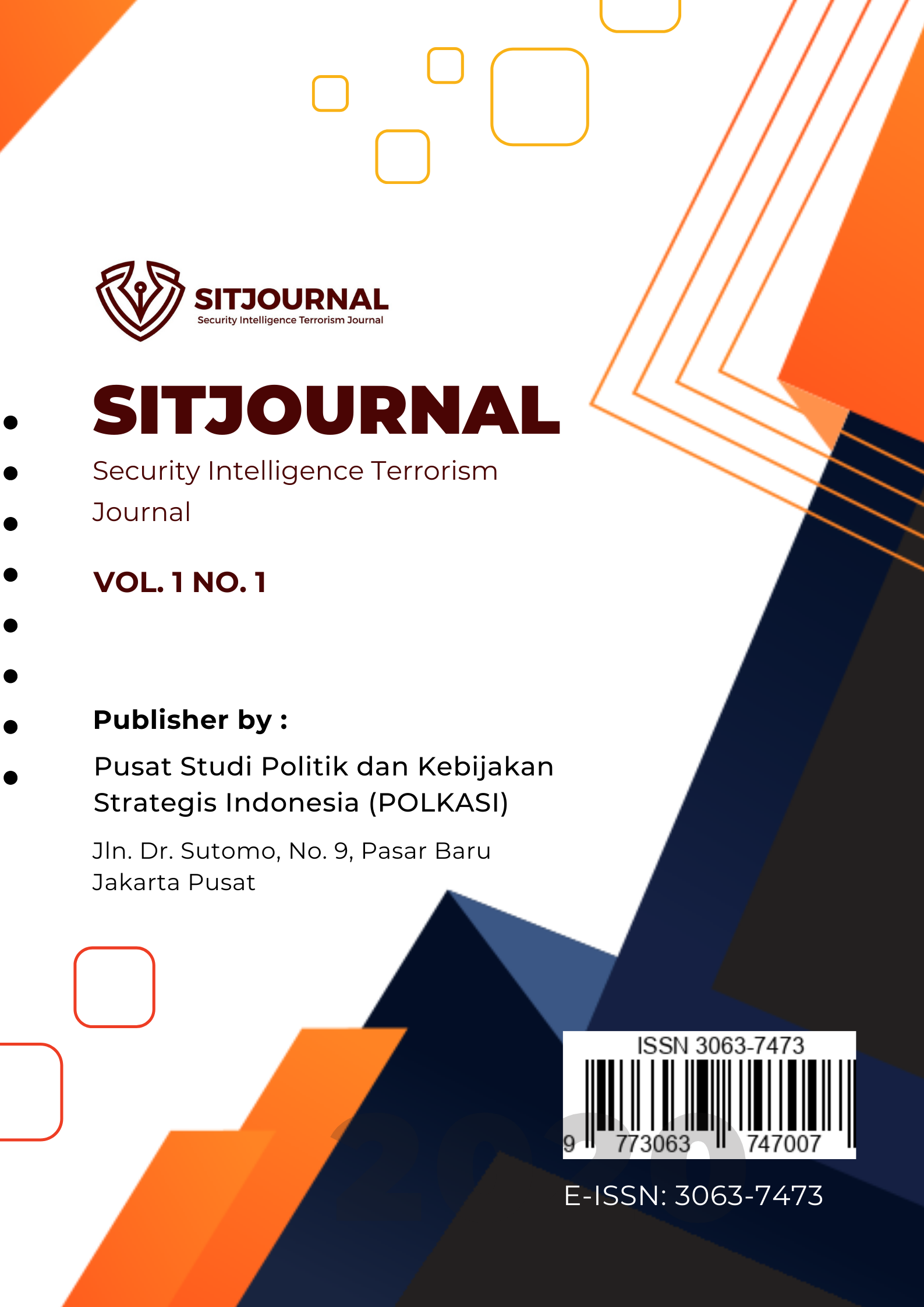An Academic Analysis of Digital Transformation: A Comprehensive Review of Literature and Business Strategies
DOI:
https://doi.org/10.70710/sitj.v1i1.4Keywords:
Business Strategy, Customer Experience, Digital Platform, Digital TransformationAbstract
The idea of digital transformation has an impact on many different facets of business. The goal of this study is to examine how digital transformation affects businesses, industries, and society as a whole, with a particular emphasis on business models, operational procedures, and customer experience. To examine the definitions, components, pillars, and important facets of digital transformation, this study uses a literature review methodology. The review's findings show that using digital technology to modernize corporate processes and improve productivity, responsiveness, and creativity is included in the concept of digital transformation. The components of digital transformation are also described in this study, including business models, digital platforms, employee experience, customer experience, and operational procedures within the organization. The customer experience, business models, and operational procedures of the organization are the three primary pillars of digital transformation. In addition, there are five essential components of digital transformation: value, data, customers, competition, and innovation. In a connected and quickly evolving business environment, digital transformation is becoming more and more significant, and firm executives need to have a long-term vision to take advantage of the potential.
Downloads
References
Agarwal, R., Johnson, S. L., & Lucas, H. C. (2011). Leadership in the face of technological discontinuities: the transformation of EarthColor. Communications of the Association for Information Systems, 29(1), 33.
Al-Ruithe, M., Benkhelifa, E., & Hameed, K. (2018). Key issues for embracing the cloud computing to adopt a digital transformation: A study of saudi public sector. Procedia Computer Science, 130, 1037–1043.
Bekkhus, R. (2016). Do KPIs used by CIOs decelerate digital business transformation? The case of ITIL. Diffusion Interest Group in Information Technology, 19. https://aisel.aisnet.org/digit2016/16/
Berman, S. J. (2012). Digital transformation: opportunities to create new business models. Strategy & Leadership, 40(2), 16–24. https://doi.org/10.1108/10878571211209314
Betz, C., Olagunju, A. O., & Paulson, P. (2016). The impacts of digital transformation, agile, and DevOps on future IT curricula. Proceedings of the 17th Annual Conference on Information Technology Education, 106.
Bharadwaj, A. (2013). Digital business strategy: Toward a next generation of insights. MIS Quarterly.
Bonnet, D., & Westerman, G. (2020). The new elements of digital transformation. MIT Sloan Management Review, 62(2).
Brown, A., Fishenden, J., & Thompson, M. (2014). Organizational Structures and Digital Transformation BT - Digitizing Government: Understanding and Implementing New Digital Business Models (A. Brown, J. Fishenden, & M. Thompson (eds.); pp. 165–183). Palgrave Macmillan UK. https://doi.org/10.1057/9781137443649_10
Chanias, S. (2017). Mastering digital transformation: the path of a financial services provider towards a digital transformation strategy.
Chanias, S., Myers, M. D., & Hess, T. (2019). Digital transformation strategy making in pre-digital organizations: The case of a financial services provider. The Journal of Strategic Information Systems, 28(1), 17–33.
Davenport, T. H., & Westerman, G. (2018). Why so many high-profile digital transformations fail. Harvard Business Review, 9(4), 15.
Fitzgerald, M., Kruschwitz, N., Bonnet, D., & Welch, M. (2014). Embracing digital technology: A new strategic imperative. MIT Sloan Management Review, 55(2), 1.
Gaivoronskii, D. V, Kutuzov, V. M., Minina, A. A., & Herbert, L. (2017). Digital transformation: Build your organization’s future for the innovation age. 2017 IEEE VI Forum Strategic Partnership of Universities and Enterprises of Hi-Tech Branches (Science. Education. Innovations)(SPUE), 3–6.
Gassmann, O., & Frankenberger, K. (2014). The Business Model Navigator ePub eBook: The Business Model Navigator: 55 Models That Will Revolutionise Your Business. Pearson UK.
Goerzig, D., & Bauernhansl, T. (2018). Enterprise architectures for the digital transformation in small and medium-sized enterprises. Procedia Cirp, 67, 540–545.
Gong, C., & Ribiere, V. (2021). Developing a unified definition of digital transformation. Technovation, 102, 102217.
Goran, J., LaBerge, L., & Srinivasan, R. (2017). Culture for a digital age.
Gray, J., & Rumpe, B. (2017). Models for the digital transformation. In Software & Systems Modeling (Vol. 16, pp. 307–308). Springer.
Gruman, G. (2016). What digital transformation really means. https://www.infoworld.com/article/3080644/what-digital-transformation-really-means.html
Haffke, I., Kalgovas, B. J., & Benlian, A. (2016). The Role of the CIO and the CDO in an Organization’s Digital Transformation.
Hartl, E., & Hess, T. (2017). The role of cultural values for digital transformation: Insights from a Delphi study.
Heilig, L., Lalla-Ruiz, E., & Voß, S. (2017). Digital transformation in maritime ports: analysis and a game theoretic framework. NETNOMICS: Economic Research and Electronic Networking, 18(2), 227–254. https://doi.org/10.1007/s11066-017-9122-x
Henriette, E., Feki, M., & Boughzala, I. (2015). The shape of digital transformation: A systematic literature review.
Herbert, L. (2017). Digital transformation: Build your organization’s future for the innovation age. Bloomsbury Publishing.
Hess, T., Matt, C., Benlian, A., & Wiesböck, F. (2016). Options for Formulating a Digital Transformation Strategy. MIS Quarterly Executive, 15, 123–139.
Horlacher, A., & Hess, T. (2016). What does a chief digital officer do? Managerial tasks and roles of a new C-level position in the context of digital transformation. 2016 49th Hawaii International Conference on System Sciences (HICSS), 5126–5135.
Iansiti, M., & Lakhani, K. R. (2014). Digital ubiquity:: How connections, sensors, and data are revolutionizing business. Harvard Business Review, 92(11), 19.
Ismail, M. H., Khater, M., & Zaki, M. (2017). Digital business transformation and strategy: What do we know so far. Cambridge Service Alliance, 10(1), 1–35.
Janowski, T. (2015). Digital government evolution: From transformation to contextualization. In Government information quarterly (Vol. 32, Issue 3, pp. 221–236). Elsevier.
Korhonen, J. J., & Halén, M. (2017). Enterprise architecture for digital transformation. 2017 IEEE 19th Conference on Business Informatics (CBI), 1, 349–358.
Kraus, S., Jones, P., Kailer, N., Weinmann, A., Chaparro-Banegas, N., & Roig-Tierno, N. (2021). Digital Transformation: An Overview of the Current State of the Art of Research. Sage Open, 11(3), 21582440211047576. https://doi.org/10.1177/21582440211047576
Legner, C., Eymann, T., Hess, T., Matt, C., Böhmann, T., Drews, P., Mädche, A., Urbach, N., & Ahlemann, F. (2017). Digitalization: Opportunity and Challenge for the Business and Information Systems Engineering Community. Business & Information Systems Engineering, 59(4), 301–308. https://doi.org/10.1007/s12599-017-0484-2
Leodolter, W. (2017). Digital transformation shaping the subconscious minds of organizations: Innovative organizations and hybrid intelligences. Springer.
Liu, D., Li, S., & Yang, T. (2012). Competitive Business Model in Audio-book Industry: A Case of China. Journal of Software, 7(1), 33–40.
Loebbecke, C., & Picot, A. (2015). Reflections on societal and business model transformation arising from digitization and big data analytics: A research agenda. The Journal of Strategic Information Systems, 24(3), 149–157. https://doi.org/https://doi.org/10.1016/j.jsis.2015.08.002
Lowe, A., Pararajasingam, A., & Goodwin, R. (2020). A UK-wide survey looking at teaching and trainee confidence in teledermatology: a vital gap in a COVID-19-induced era of rapid digital transformation? Clinical and Experimental Dermatology, 45(7), 876–879.
Matt, C., Hess, T., & Benlian, A. (2015). Digital transformation strategies. Business & Information Systems Engineering, 57, 339–343.
Mazzone, D. M. (2014). Digital or death: digital transformation: the only choice for business to survive smash and conquer. Smashbox Consulting Inc.
McDonald, M. P., & Rowsell-Jones, A. (2012). The digital edge. Gartner, Incorporated.
Morakanyane, R., Grace, A. A., & O’reilly, P. (2017). Conceptualizing digital transformation in business organizations: A systematic review of literature.
Nwankpa, J. K., & Roumani, Y. (2016). IT Capability and Digital Transformation: A Firm Performance Perspective. International Conference on Interaction Sciences.
Paavola, R., Hallikainen, P., & Elbanna, A. R. (2017). Role of Middle Managers in Modular Digital Transformation: the Case of Servu. ECIS, 58.
Roedder, N., Dauer, D., Laubis, K., Karaenke, P., & Weinhardt, C. (2016). The digital transformation and smart data analytics: An overview of enabling developments and application areas. 2016 IEEE International Conference on Big Data (Big Data), 2795–2802.
Rogers, D. (2016). The Digital Transformation Playbook Rethink Your Business for the Digital Age (NV-1 Onl). Columbia University Press New York, NY.
Rowe, P. S. (2017). Transformative Apostrophe: Astonishing Effects of Assimilation in Shelley’s “Ode to the West Wind.” Literary Imagination, 19(1), 30–53. https://doi.org/10.1093/litimag/imx021
Selander, L., & Jarvenpaa, S. L. (2016). Digital Action Repertoires and Transforming a Social Movement Organization. MIS Quarterly, 40(2), 331–352.
Siebel, T. M., & Rice, C. (2019). Digital Transformation Survive and Thrive in an Era of Mass Extinction (NV-1 onl). RosettaBooks Newburyport.
Solis, B., & Szymanski, J. (2016). The six stages of digital transformation. Altimeter Prophet.
Stock, J. R., & Boyer, S. L. (2009). Developing a consensus definition of supply chain management: a qualitative study. International Journal of Physical Distribution & Logistics Management, 39(8), 690–711. https://doi.org/10.1108/09600030910996323
Stolterman, E., & Fors, A. C. (2004). Information Technology and the Good Life BT - Information Systems Research: Relevant Theory and Informed Practice (B. Kaplan, D. P. Truex, D. Wastell, A. T. Wood-Harper, & J. I. DeGross (eds.); pp. 687–692). Springer US. https://doi.org/10.1007/1-4020-8095-6_45
Suddaby, R. (2010). Editor’s comments: Construct clarity in theories of management and organization. In Academy of management review (Vol. 35, Issue 3, pp. 346–357). Academy of Management Briarcliff Manor, NY.
Van Veldhoven, Z., & Vanthienen, J. (2022). Digital transformation as an interaction-driven perspective between business, society, and technology. Electronic Markets, 32(2), 629–644.
Vial, G. (2019). Understanding digital transformation: A review and a research agenda. The Journal of Strategic Information Systems, 28(2), 118–144.
Wacker, J. G. (2004). A theory of formal conceptual definitions: developing theory-building measurement instruments. Journal of Operations Management, 22(6), 629–650. https://doi.org/https://doi.org/10.1016/j.jom.2004.08.002
Wang, Y., Kung, L., & Byrd, T. A. (2018). Big data analytics: Understanding its capabilities and potential benefits for healthcare organizations. Technological Forecasting and Social Change, 126, 3–13. https://doi.org/https://doi.org/10.1016/j.techfore.2015.12.019
Westerman, G., Bonnet, D., & McAfee, A. (2014). The nine elements of digital transformation. MIT Sloan Management Review, 55(3), 1–6.
Westerman, G., Calméjane, C., Bonnet, D., Ferraris, P., & McAfee, A. (2011). Digital Transformation: A roadmap for billion-dollar organizations. MIT Center for Digital Business and Capgemini Consulting, 1, 1–68.
White, M. (2012). Digital workplaces: Vision and reality. Business Information Review, 29(4), 205–214. https://doi.org/10.1177/0266382112470412
Wolfswinkel, J. F., Furtmueller, E., & Wilderom, C. P. M. (2013). Using grounded theory as a method for rigorously reviewing literature. European Journal of Information Systems, 22(1), 45–55.
Zaoui, F., & Souissi, N. (2020). Roadmap for digital transformation: A literature review. Procedia Computer Science, 175, 621–628.
Downloads
Published
How to Cite
Issue
Section
License
Copyright (c) 2024 Security Intelligence Terrorism Journal (SITJ)

This work is licensed under a Creative Commons Attribution-NonCommercial-ShareAlike 4.0 International License.









